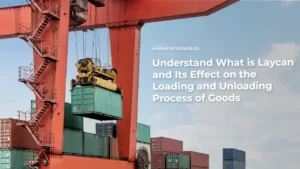Case Study: Distribution Route Optimization to Improve Operational Efficiency in Various Industries
Posted on September 10, 2024 by Nur Wachda Mihmidati

Distribution Route Optimization of goods and services is one of the most important aspects of business operations, especially for companies that have extensive distribution networks with high efficiency requirements. Whether it is gas, dairy products, or blood that requires special handling, the success of distribution is highly dependent on the company’s ability to manage routes optimally. With the continuous development of technology, such as the use of algorithms and GIS-based systems, companies can now overcome various challenges in distribution routes, including reducing transportation costs, accelerating delivery times, and minimizing operational risks.
This article presents various case studies from various industries that have successfully implemented distribution route optimization solutions. From the distribution of Gaslink C-Cyl in Jakarta to the distribution of blood by PMI and dairy products in the Middle East, each company has been able to significantly improve their distribution efficiency through modern technology. These studies demonstrate the importance of innovation in logistics management and its real impact on reducing costs and improving operational performance.
GIS-Based C-Cyl Gaslink Distribution Route Optimization to Reduce Transportation Costs
The distribution process is a complex problem because it involves many parties, from the source (depot) to several destinations. The more nodes (both depots and destinations) involved, the distribution performance will be affected, both in terms of total distance traveled, distribution costs, or other factors. PT Gagas Energi Indonesia, a subsidiary of Pertamina Gas Negara (PGN), is involved in the natural gas trade, one of which is Gaslink C-Cyl which contains CNG (Compressed Natural Gas). Gaslink C-Cyl is distributed to customers, while empty cylinders will be refilled at the nearest Gas Filling Station (SPBG).
One of the SPBGs that has the highest utilization rate every year is SPBG Klender, which is a gas supplier for the DKI Jakarta area. Therefore, SPBG Klender is used as a case study in this study because it has the largest potential for Gaslink C-Cyl customers, as seen from the high utilization of SPBG from year to year compared to other SPBGs.
Based on this problem, the study aims to determine the optimal distribution route and the number of vehicles used to minimize total transportation costs. To solve this problem, GIS-based optimization is used by adopting the MTVRPTW-SPD model. Network analysis tools in GIS are used to design CNG distribution routes based on real cases involving spatial information. The implementation of this model brings benefits to the company because it allows vehicles to make multiple trips in a day. The results of the study show that this model is able to reduce the number of vehicles used and the total distance traveled, which ultimately increases the efficiency of transportation costs. Optimization of distribution routes for 50 demand points managed to reduce the number of vehicles by 3 units, reduce the distance traveled by 46.5%, and reduce the total cost by 43.5%. Other findings show that for demand points ranging from 50-200, the company needs to consider renting 4-11 trucks according to the calculation table.
Optimizing Dairy Product Distribution with Algorithms for Operational Efficiency
A leading dairy supplier in the Middle East, with 500 sales routes, 24 warehouses, and over 35,000 customers, faced a major challenge in optimizing its distribution process. With products moving through hundreds of routes, they needed an in-depth evaluation of route schedules, fleet management, and proper delivery planning, especially for perishable dairy products. In addition, they faced issues of route overlap and long-term route allocation, as well as challenges in managing driver unavailability and service disruptions.
They leveraged advanced technologies such as machine learning (ML) and genetic algorithms to address these issues. They used a distribution route optimization algorithm to map nearby locations and design efficient routes, and tailored delivery plans based on the client’s specific needs. As a result, the client managed to reduce the distance traveled by 27% and the number of routes by 16%. With these improvements, the client not only saved operational costs by reducing the number of delivery trucks but also increased their distribution and sales efficiency.
Optimization of PMI Blood Distribution Routes in DKI Jakarta for Efficiency and Speed of Delivery
Blood distribution carried out by the Indonesian Red Cross (PMI) in DKI Jakarta faces major challenges because blood is a perishable item and requires special handling in shipping. With the high need for blood in DKI Jakarta as the third most populous province in Indonesia, PMI must ensure that blood distribution from the PMI Head Office in Central Jakarta to 40 Hospital Blood Banks (BDRS) runs quickly and accurately. However, until now, blood distribution has not used a structured route planning system. Ambulance drivers usually determine delivery routes based on personal preferences and ambulance capacity, without considering the optimal route or the dense traffic conditions in Jakarta.
The study determined that it provides the most optimal blood distribution route optimization, both in terms of speed and accuracy of delivery. By using the Vehicle Routing Problem (VRP) model and the AMPL program, two routes were produced that were more efficient than the Nearest Neighbor (NN) Algorithm. The total route distance from the AMPL program was 116.15 km, shorter than the results of the NN Algorithm with a total distance of 127.66 km. The results of the study showed that the use of a more efficient route can not only save distance but also help maintain the quality of the blood being sent. This research can also be further developed using the simulated annealing algorithm for more accurate calculations and considering cost-saving aspects during blood distribution activities.
Distribution Route Optimization with TransTRACK: Advanced Solution for Logistics Efficiency
TransTRACK is an innovative solution in distribution and logistics management designed to help companies optimize delivery routes. With various advanced features, TransTRACK not only improves operational efficiency, but also reduces transportation costs and speeds up the delivery process. Here are some of the main features of TransTRACK that support route optimization:
- Route Optimization Algorithm: TransTRACK uses an advanced algorithm to determine the most efficient delivery route through the Route Optimization feature. By considering various factors such as distance, time, and traffic conditions, this algorithm can map a route that minimizes travel, thereby reducing fuel costs and travel time.
- Real-Time Monitoring: The real-time monitoring feature allows companies to track vehicle positions in real time. With up-to-date information, companies can anticipate and address issues that may arise during the delivery process, such as congestion or delays, and make route adjustments quickly.
- Efficient Fleet Management: TransTRACK provides tools to manage fleets effectively. Users can monitor vehicle conditions, maintenance schedules, and driver availability. This helps in planning optimal fleet usage, thereby maximizing the potential of available vehicles.
- Data Analysis and Performance Reporting: With in-depth data analysis, TransTRACK provides insights into distribution performance. Users can view delivery patterns, identify areas for improvement, and make data-driven decisions to improve efficiency.
- Integration with Other Systems: TransTRACK can be integrated with other management systems, such as inventory and ordering systems. This ensures that all aspects of operations are seamlessly connected, making management easier and streamlining workflows.
- Dynamic Scheduling: Dynamic scheduling allows for adjustments to routes and delivery times based on changing demand. With this capability, companies can be more responsive to customer needs, reduce lead times, and increase customer satisfaction.
By combining these features, TransTRACK provides a comprehensive solution for companies to optimize their distribution routes, improve efficiency, and reduce operational costs. This makes TransTRACK an essential tool in today’s increasingly competitive logistics world.
Recent Post
Know the Function, Components, and How Electric Power Steering Works!
December 24, 2025Know the Types of Buses Based on Their Model, Size, and Capacity!
December 22, 2025Topic :
Recommended Articles

 Bahasa Indonesia
Bahasa Indonesia








